Minicams and special rigs are increasingly shaping broadcasters’ coverage of sporting events and offering factual and drama producers a new set of tools to hook jaded audiences. Michael Burns looks at five examples

Mini cameras and special rigs have come to the fore as producers strive to get tricky or intimate shots that will set them apart from the competition, or grab the attention of a jaded viewer. This has spurred great advances in scaled-down camera technology as rigs are used to get the action from places often barred to normal broadcast cameras, particularly in sports coverage.
“Moving away from providing generic views and close-ups from the side of the pitch, cameras are being placed much closer to the heart of the action,” says Barry Parker, commercial manager of specialist hire firm Camera Corps. “We are now starting to see a shift: new camera products are actually shaping the way audiences view and consume sport.”
Then there are unmanned aerial vehicles (UAVs), or drones, offering improved image quality and recording capability.
“Drones can provide shots that fill the gap between a crane or jib and manned aviation,” says John Leach, managing director of sports producer Sunset+Vine. “They are cheaper than a helicopter but are not a replacement. If used conservatively and correctly, the close-in, dynamic moves that they provide can add a great deal.”
Cameraman/DoP Jeremy Braben of aerial filming specialist Helicopter Film Services (HFS) adds: “The drone is just another tool in the filmmaking arsenal that is carving its own little niche. We can get much closer than a full-size helicopter – flying very low level through a set, for example.”
THE ISLE OF MAN TT 2015
Production company North One Television
Camera rig/drone supplier Camera Corps
TX May-June 2015, ITV4
North One’s daily coverage of the 108th Isle of Man TT race used Camera Corps’ specialist minicameras for on-board images from the motorcycles, as well as remote cameras for shots from each stage of the 38-mile circuit.
Camera Corps’ HD mini-camera systems were rigged on the race bikes for point-of-view, front- or rear-facing shots. The crew also fitted a secondary mini-camera to capture shots of gear changes and hands on throttles.
“One of the logistical problems of the TT is that the systems have to be installed over each class of race bike within the day’s racing, which is where the expertise of our crew comes in,” says Camera Corps’ Parker. “The teams trust us to fit our equipment correctly without impacting on the performance or the preparation of their precious machines.”
The fixed-stage camera systems that are rigged in creative locations around the course have also been developed to cope with changes to the race schedule. “If we pushed the ‘go’ buttons an hour before the start of the race and it was then delayed, the system would run out of recording media capacity,” says Parker.
“We developed a system exclusively for the TT events that has a built-in cellular technology that can be controlled by text message. The systems are rigged around the circuit on the morning of each race and can be controlled throughout the day from our main base – we simply text it to record or to stop recording.”
THE US OPEN 2015
Production company Fox Sports; Sky Sports
Camera rig/drone supplier Motion State; Helivideo
TX 18-21 June 2015, Sky Sports
Sky’s coverage of this year’s US Open included many innovations devised by host broadcaster and corporate cousin Fox Sports. As well as a cup microphone for improved on-course audio at crucial moments, and augmented-reality graphics to display wind, distances and player positions, the production made use of special remote-controlled camera rigs.
These included RF-controlled cars rigged with HD cameras , giving unique perspectives on the action from Chambers Bay, as well as a live feed from a drone-mounted camera.
The on-course mobile shots were captured using a Red Dragon camera and interchangeable lens on a Tero car system carrying a Movi stabilisation and control unit. Motion State provided and operated the system with two operators: one as the car driver and another running the camera.
This was all tied into a custom RF set-up from Motion State and RF specialist BSI.
The remote-controlled cars delivered low-angle motion shots, tracking players’ walks from the first tee until they head down the 18th fairway.
Meanwhile, the live drone camera offered high-angle aerial pan-and-track shots over the golf course. The drone was a DJI optocopter model, fitted with a Panasonic GH4 camera by Helivideo. The company also provided the three-person operation team (pilot, spotter and camera operator) and a custom RF transmission set-up, tied into a remote link provided by BSI.
Fox offered the feed from these remote-controlled RF cameras between live shots, with Sky Sports deploying them for added atmosphere and scenic shots or sequences around breaks.
FLINTOFF: LORD OF THE FRIES (SERIES TWO)
Production company Plum Pictures
Rig supplier/developer Prime Television
TX TBC, Sky 1
In Flintoff: Lord Of The Fries series two, the former England cricketer and extreme cyclist Rob Penn again go on a tour in Flintoff ’s ecofriendly, cooking-fat-fuelled mobile chip shop – a former black cab.
Prime Television, which has been supplying and building minicam systems for more than 20 years, was asked to provide a three-HD camera rig system that would fi t in the front of the taxi.
“The first series had sync issues with the minicams, so solving that was the most important thing,” says Prime TV managing director Nick Ludlow. “It also had to be true HD as the material will be used for more than the specified 10% minimum of the show.”
Prime opted for modified Toshiba HD2 cameras and lenses with Sound Devices PIX0- 240i recorders (below). “This configuration allowed us to match the cameras and sync all recorders with the same TOD timecode and record high-end audio of the two presenters to each recorder,” says Ludlow. “The cameras are static and the lenses have a fixed focal length.”
However, speccing the equipment proved to be the easy part.
“The issue here was the limited space and the duration of the shoot,” says Ludlow. “We contracted a special plate with mounting points for the recorders and camera CCUs. It was raised and had space to allow for maximum ventilation and cooling of the equipment, while keeping the rig simple.”
KNIT ME SOME HAPPINESS
Production Company Tisk Media
Camera/drone supplier Helicopter Film Services
View At vimeo.com
For her short documentary about the day the Sheffield Knitting Club made a communal picnic blanket, Sofia Olins wanted a big reveal for the unfolding of the giant rug. The production turned to Helicopter Film Services (HFS) to deliver the shot, making it one of the first films to combine an Alexa Mini and drone for an aerial sequence.
The short was the result of winning a competition run by Arri with Sheffield Doc/Fest, where it was both filmed and premiered.
“The production was shooting with Arri kit on the ground. To keep the look and workflow consistent, the Alexa Mini was required,” explains cameraman Jeremy Braben. “It was also about scale and bringing a more cinematic feel.”
To carry the camera, the HFS team used an Aerigon cinematic drone piloted by Alan Parkin. The full set-up also included Zeiss master prime lenses and zooms, as well as the Arri WRCU lens control.
“The camera operator has a console that communicates with the drone, and on that console we have a monitor that is getting a live feed from the camera,” says Braben. “On this project, we could split off the camera remote functions and give them to a focus puller [DoP Jen Fearnley] in charge of the start/stop, the lens functions and the focusing, using the Arri WRCU. The camera operator then just had to concentrate on the framing.”
High winds made it difficult to achieve the shots, but Braben says the drone performed extremely well: “We started in close and flew back and away at speed. We were able to get much closer than with a full-size helicopter and higher than a crane – with one tool. We also did some tracking shots and some very high [400ft] wide shots, to put some scale into it.”
Olins adds: “The aerial shots were an integral part of the narrative. Without them, the story would not have had the impact that it did.”
THE C WORD
Production company BBC Drama Productions
Camera rig supplier The Lens Foundry
TX 3 May 2015, BBC1
The Lens Foundry was approached by DoP Stephan Pehrsson, who was looking for a way to convey visually the story of cancer sufferer Lisa Lynch’s time in hospital for a one-off sequence within the 90-minute film.
Director Tim Kirkby had wanted to make the transition of time a feature of the drama, but this visual effects sequence had been rejected on budgetary grounds. That was until Pehrsson suggested they use the Lens Foundry’s Mini- MoCo system, a motion-control rig that has been used extensively for visual effects sequences where time and budget do not allow for bigger, more complex systems. The Mini- MoCo system has a pipeline to and from Maya for VFX tracking and pre-visualisation.
As the shoot was to take place in NHS patient rooms in a real hospital ward, space was limited. The Mini-MoCo features a camera running along a 20ft track, with operators able to control pan, tilt, track, focus, iris and zoom on the mounted camera.
As with all special rigs, there’s a skill involved in setting up the system quickly and reliably, and picking the best overall package to complete the shot.
To avoid interrupting the main production schedule, the Lens Foundry supplied an independent ‘splinter unit’ including camera and lenses. The system was fitted with a Sony F55, chosen due to its internal RAW and simultaneous HD recording capabilities, and Global Shutter. The team shot a multiple pass sequence involving eight repeat moves. Sister company Lexhag Visual Effects then interpreted this into the finished shot.

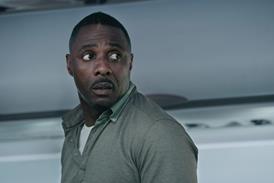





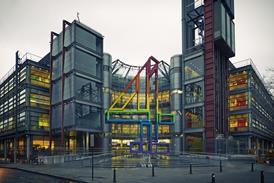

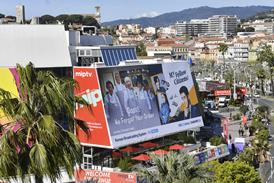


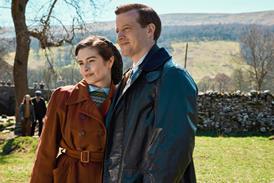


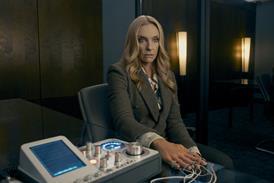


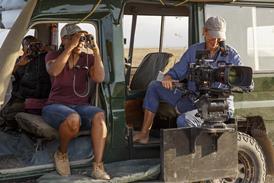






No comments yet